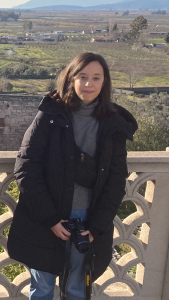Salma Azzam

Salma Azzam
Salma Azzam is a graduate of the American University in Cairo with a Master of Arts in Islamic Art and Architecture. In 2015 she started working on Anatolian Seljuk Architecture during which she traveled around middle Anatolia. She completed her master’s thesis, entitled “The Seljuks of Anatolia: An Epigraphic Study” which was awarded best thesis in Islamic Art and Architecture category in 2017. Salma have been based in Istanbul from 2017-2022 where she had progressed her linguistic skills and academic field research.
In October 2022, she became a University Assistant (prae-doc) at the Doctoral School of Historical and Cultural Studies at the University of Vienna.
Research interests: Islamic Art and Architecture, Monumental Inscriptions, Medieval Anatolian Architecture and Culture, Archaeology, Manuscript Studies.
Current research project: The Beyliks of Anatolia: Architectural Patronage and Monumental Epigraphy.
I am currently working on my PhD project with the supervision of Professor Markus Ritter in the Department of Art History. My topic is concerned with the Western Anatolian beyliks’ architectural patronage and monumental epigraphy. The beyliks of Anatolia are the principalities that gained power in the second half of the 13th century with the weakening of the Anatolian Seljuk sultanate after its defeat against the Mongols in 1243 CE. My research focuses on the building program of the Western Anatolian principalities who established their emirates around the valleys of the Menderes rivers and parallel to the Aegean Sea in an era that spans from the year 1307 till the year 1404. The monuments of this area provide a rich corpus of architectural and epigraphic styles, with unique compilations of decorative motifs and reused material. The dissertation focuses on the architectural patronage of the principalities and the interpretations that it can provide to understand the building and decorative styles as representations of authority, as well as examine the impact of the cultural diversity of Western Anatolia on the architectural and epigraphic programs. The Thesis encompasses an inclusive analysis of the development of the building patronage and dynastic building policy of the principalities to illuminate the representation of the architectural rivalry, epigraphic and stylistic variety in the beylik centers of the mid-14th and early-15th century Western Anatolia.
